SPACE June 2025 (No. 691)
I AM AN ARCHITECT
‘I am an Architect’ was planned to meet young architects who seek their own architecture in a variety of materials and methods. What do they like, explore, and worry about? SPACE is going to discover individual characteristics of them rather than group them into a single category. The relay interview continues when the architect who participated in the conversation calls another architect in the next turn.
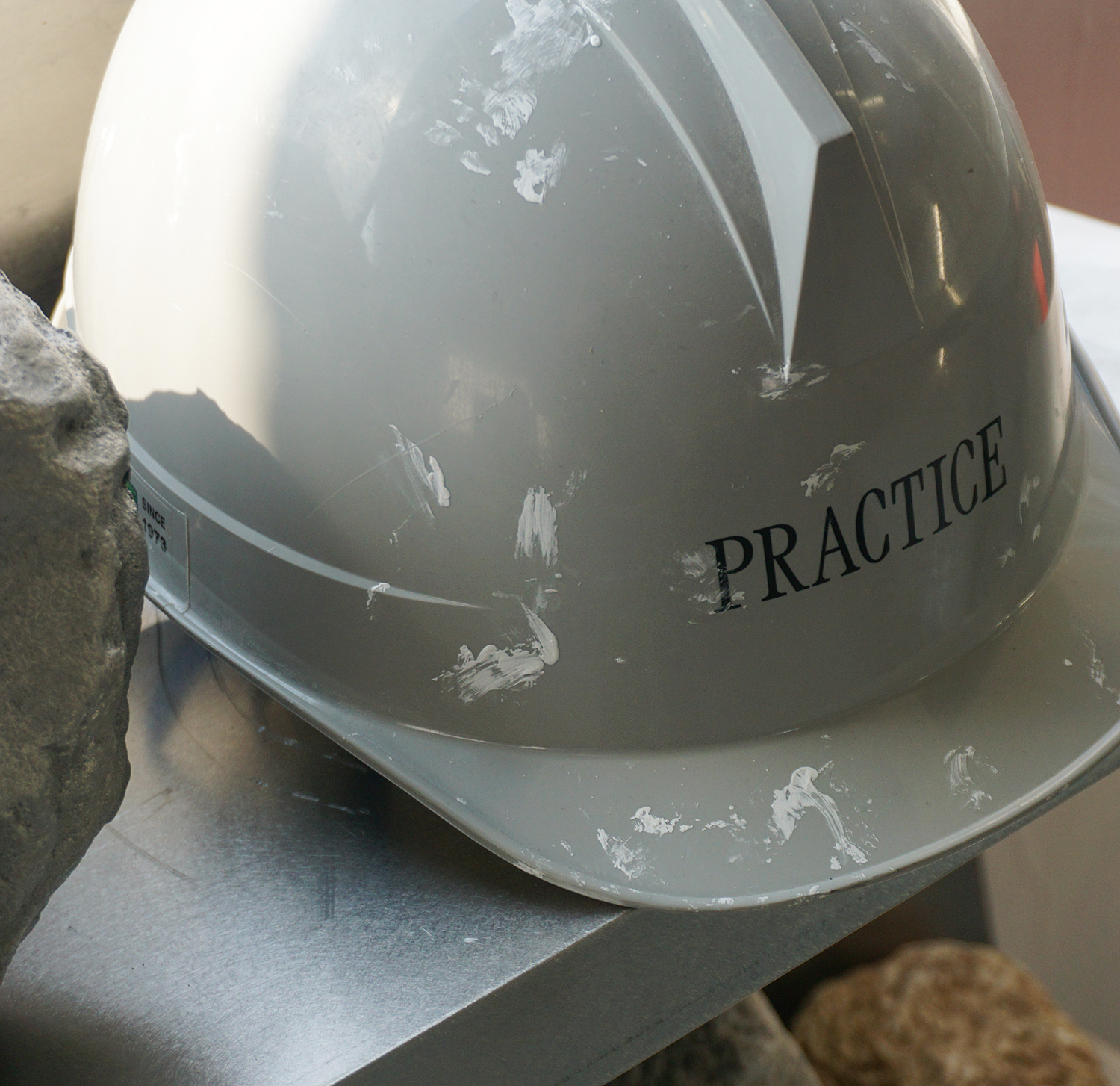
Interview Ahn Seohu, Lee Sisan co-principals, STUDIO PRACTICE × Kim Hyerin
Crossover, PRACTICE
Kim Hyerin (Kim): Lee, you recently participated in Milan Design Week 2025 as an exhibiting artist with GUCCI, right? Did anything interesting happen in Milan?
Lee Sisan (Lee): Flying business class for the first time definitely left a strong impression on me! (laugh) Since I had to be present in the exhibition space for the whole duration, I didn’t get to see many other shows. One memorable moment was getting to talk with Yoshioka Tokujin. He was exhibiting right next to GUCCI in collaboration with the watch brand Grand Seiko. I’ve admired him since I was a student, so it was an honour to meet him as a fellow artist.
Ahn Seohu (Ahn): I was also in Milan for other work, but as soon as I arrived I was super busy meeting people. A fun coincidence was running into Oliver Boualam from BNAG. We first connected during the pandemic, in 2020, through the online exhibition ‘Emergence and Existence of Arbitrariness’ (2020) supported by the Korea Craft & Design Foundation. Although I had never met him in person, we’ve known each other for about four years. I bumped into him by coincidence in Milan, and I ended up staying a night at his place and got to visit his studio too.
Kim: Lee, it seems that you have been quite active internationally, such as being selected as a ‘Rising Talent’ as part of Maison & Objet 2025 (covered in SPACE No. 689).
Lee: It’s not like I design with the aim of going abroad. It’s just that there aren’t many design galleries in Korea. So, naturally, I started responding to queries from galleries overseas. My scope of activity gradually expanded with the participation of a few international exhibitions.
Kim: Lee, you majored in interior design, right? I’m curious how you ended up working as a furniture artist.
Lee: Compared to spatial design, which often remains theoretical or virtual in school projects, designing furniture was fun because of the possibility of actual physical interaction with objects—we can sit and touch them, and really engage with them. I enjoyed the hands-on process too. At the school I attended, students were required to create both furniture and a spatial design piece for their own graduation projects. That’s when I conceptualised Proportions of Stone. Later, Ahn reached out to me to put on an exhibition, and the piece was first shown at Meeseek, the gallery café he runs.
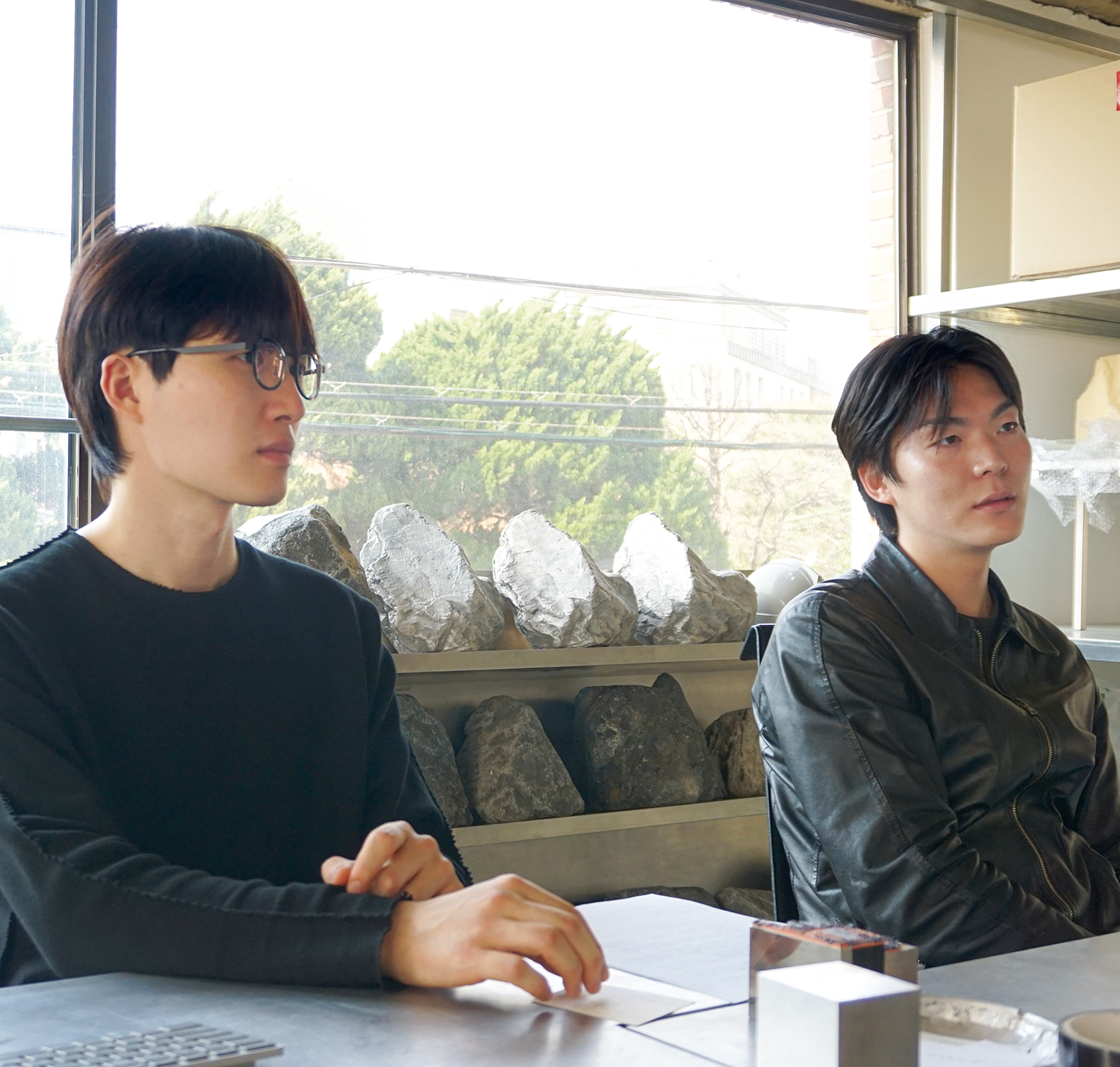
Ahn Seohu (left) and Lee Sisan (right)
Kim: Ahn, how did you come across Lee’s works and decide to reach out?
Ahn: I found him during my search for artists’ works in furniture design on Instagram.
Lee: I had uploaded a 3D-rendered image of the furniture I was working on for my graduation project, and apparently Ahn thought it was an actual piece. (laugh) I guess the render looked too real. Since there was an opportunity to exhibit, I thought it would be a great chance to actually bring it to reality.
Kim: Ahn, you studied architecture and yet you proceeded to establish a gallery café Meeseek, which also functions as a designers’ community.
Ahn: I’ve always loved furniture. While studying architecture, I liked the furniture designs of contemporary architects like Sam Chermayeff. By the time I graduated, I had lost interest in architecture itself. I tried working in other fields, but neither really suited me. So, I decided to step away and pursue what I truly wanted to do. Meeseek began in 2019 as a space where I could connect with other furniture designers.
Kim: Unfortunately, I heard that the gallery café space is no longer in operation.
Ahn: Back then, I didn’t feel confident about selling artworks. Since I had to pay monthly rent, I ended up running it as a café as well. I operated it as a gallery café for about two years. But as it gained popularity through Instagram, there were more responsibilities, like managing staff and operations. As a consequence, I decided to close the space to focus solely on exhibitions. Now, I seek sponsorship from companies, collaborate with other galleries, or apply for government-funded projects. For example, in the exhibition ‘Limbo of Image’ (2023) with the marble company Total Marble, I actually pitched the concept myself by designing an exhibition that would benefit participating artists while also promoting the company image. I had previously seen on Instagram that Total Marble had a lot of leftover marble waste, so I proposed an exhibition that would use leftover marble waste.
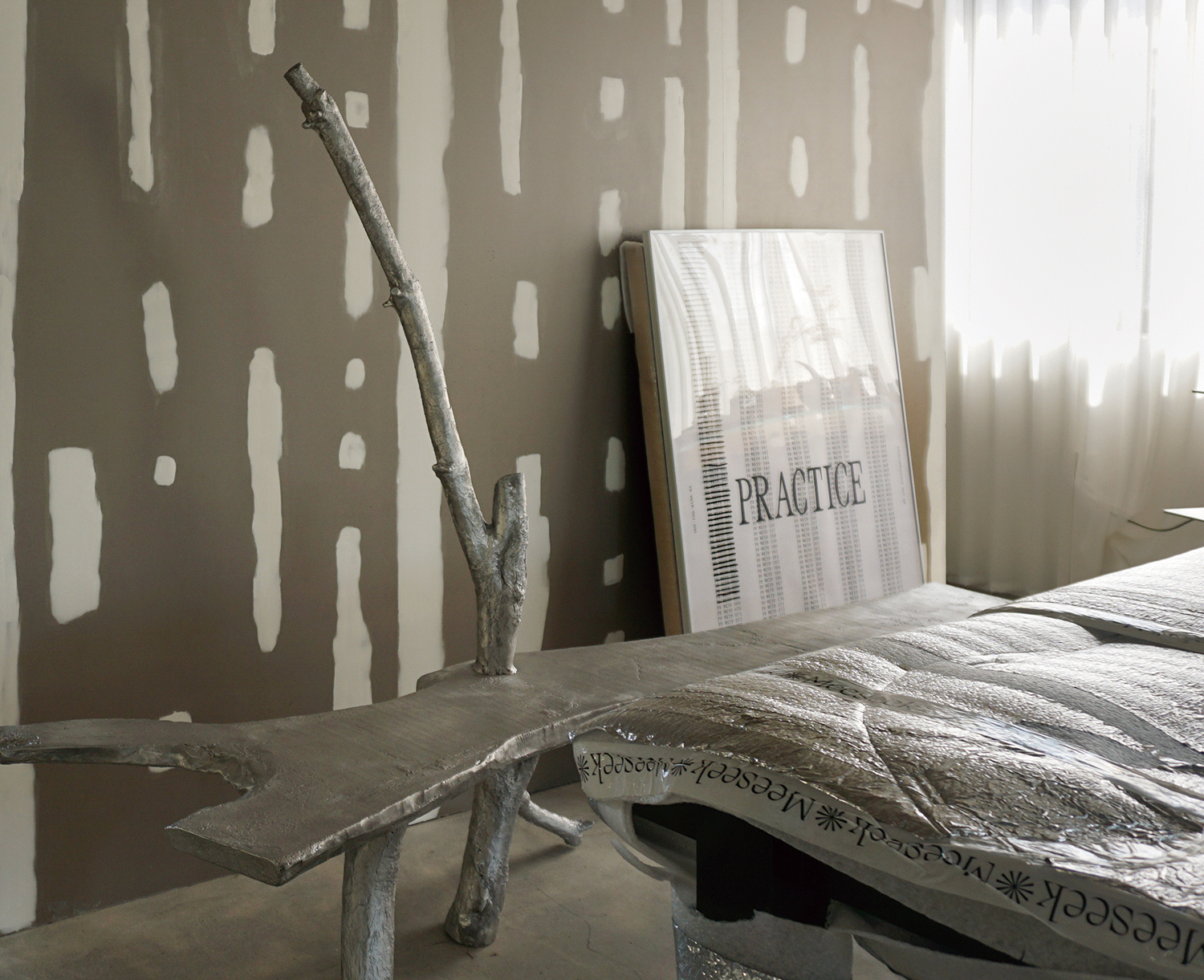
Office of STUDIO PRACTICE
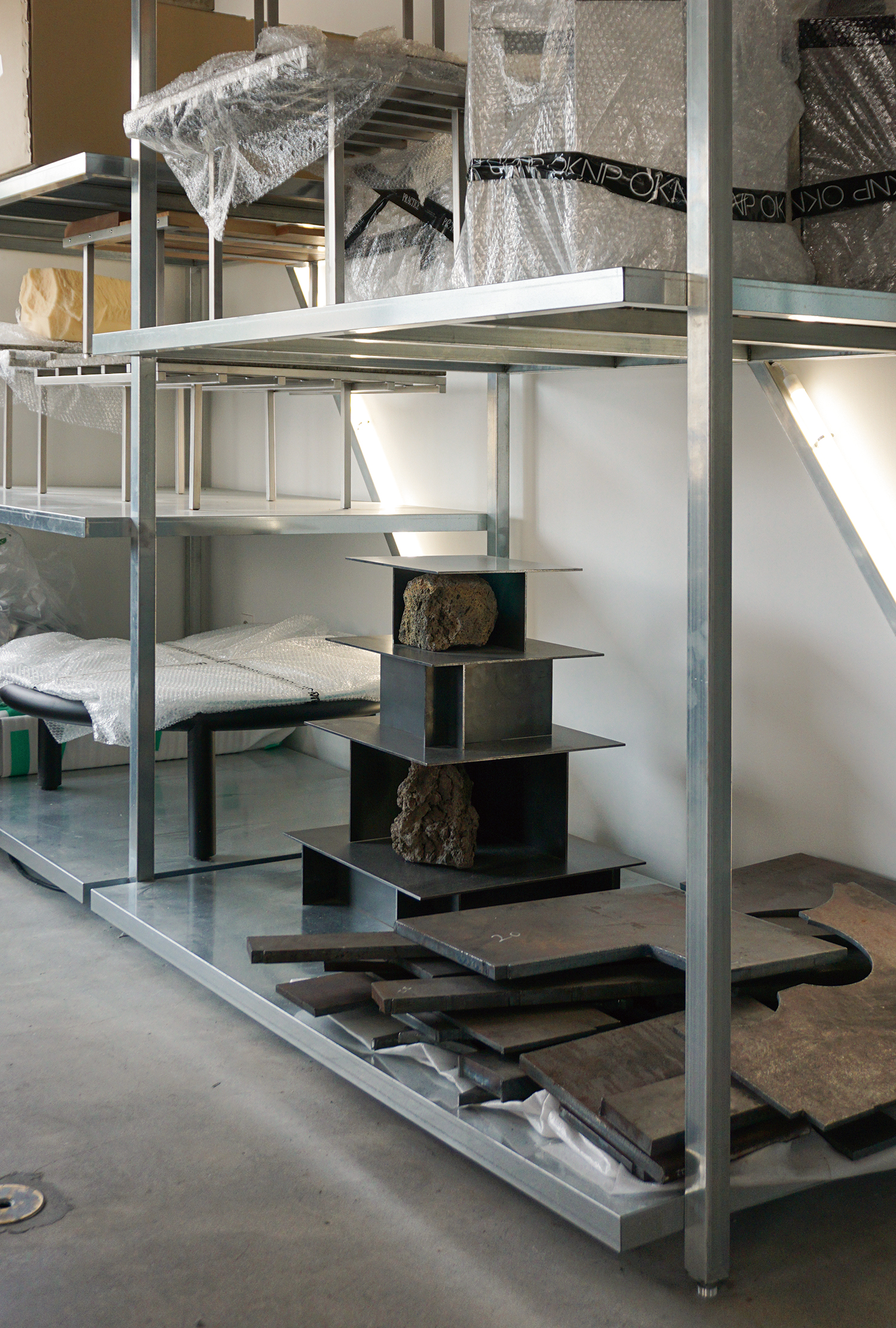
The work visible at the front is Stone Pagoda_Level 3 by Lee Sisan
Just, PRACTICE
Kim: How did STUDIO PRACTICE (hereinafter PRACTICE) start?
Ahn: The gallery café Meeseek is a project with which I engaged as the interior designer. One customer, who really liked Meeseek, asked me in 2019 to design the interior of what was then 0 Gallery (now Pluripotent Art Space). They also wanted to buy Lee’s art works on exhibition at the time at Meeseek. I wasn’t confident about starting the project alone, but it just so happened that Lee had studied interior design and had just graduated, so the timing worked out. We quickly registered a business for the project. When naming our business, we decided not to assign any specific meaning. In Europe, design studio is sometimes known as a ‘design practice’, so we went with a neutral term that simply means ‘company’ or ‘studio’. Frankly, we only fully committed to running PRACTICE after our direction became distinct. For the first two years, we didn’t even have office space.
Lee: We worked at Meeseek and even held client meetings there. (laugh)
Ahn: At first, we did not expect to continue PRACTICE long-term. We had different dreams at the time—I wanted to be an architect, and Lee wanted to focus on his art practice. After two years, we reached a point where we had to decide whether to continue or not. As the number of projects started to increase, we had to hire more people. This meant that we would need to find a proper office space. Now, PRACTICE includes the two of us plus four interior designers.
Kim: I often meet people who start studios or architecture firms as co-principals. Partnerships aren’t always easy—have you ever clashed with each other?
Lee: Ahn wanted to use more colour, while I have always preferred highlighting the material context and therefore I’ve tended to avoid covering materials with colour. As my previous works already worked with strong textures, it took us some time to find harmony. But, through that process, our styles naturally blended. Ahn’s preference for warm-toned wood and my preference for cold metals came together. Because we spent time adjusting early on, things are much more peaceful now.
Kim: What’s your secret to running a studio, especially when balancing what you want to design and what you have to design?
Ahn: In a way, our job is also a sort of service. For client projects, we need to meet their needs while still showing who we are as designers. We try to strike that balance and express our identity through our work.
Lee: We often give clients multiple options to persuade them. (laugh) We also put a lot of effort into building a strong portfolio. These days, clients who approach us tend to share our design values because they’ve seen our portfolio.
Kim: Giving multiple options seems to be a strategy many studios use. I also hear that clients often bring their own references nowadays.
Ahn: Everyone is used to image references now. At kick-off
meetings, clients often expect us to bring reference images too. Designing usually takes two to three weeks, but you can find reference images online in mere minutes.
Lee: However, we prefer to build our designs through conversations—learning about a brand’s identity and story. That process actually feels easier and more natural to us.
Kim: Are there any client projects that stand out in your memory?
Lee: Obscura Store in Dosan (2021) project came through someone who had previously purchased my work. That connection eventually led to the Youth Store in Seongsu (2024) project, where my art furniture displayed. Since the client liked my art and then commissioned us for the spatial design too, the whole project became a great portfolio piece for PRACTICE. Another memorable one is the HATCHINGROOM Store in Seongsu (2024). It was a project where the client brand’s aesthetic and our directions were well aligned. They appreciated our approach to showcasing the raw quality of materials, so our studio’s identity was well reflected in the project.
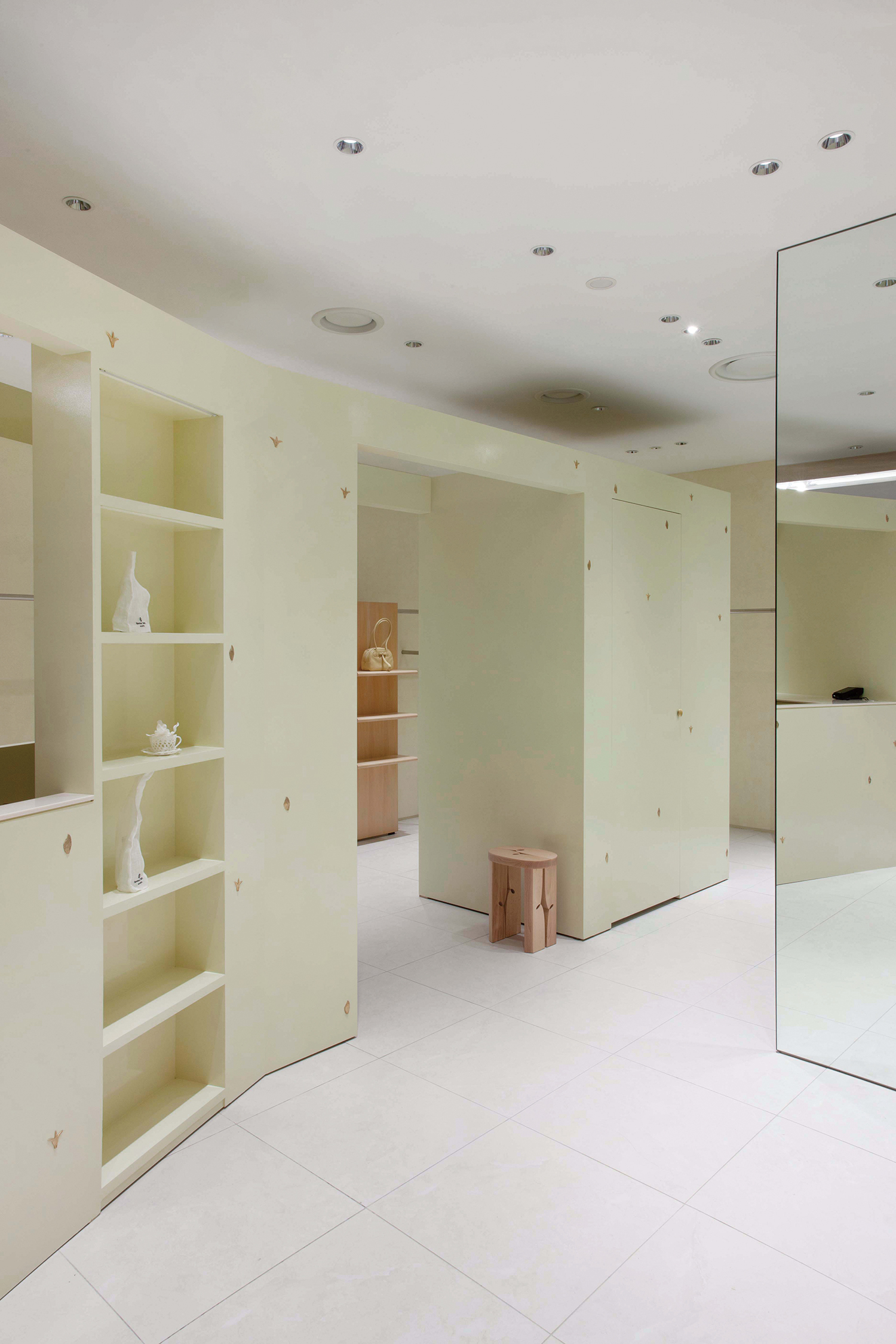
DEWL in Jeonju (2025) ©STUDIO PRACTICE
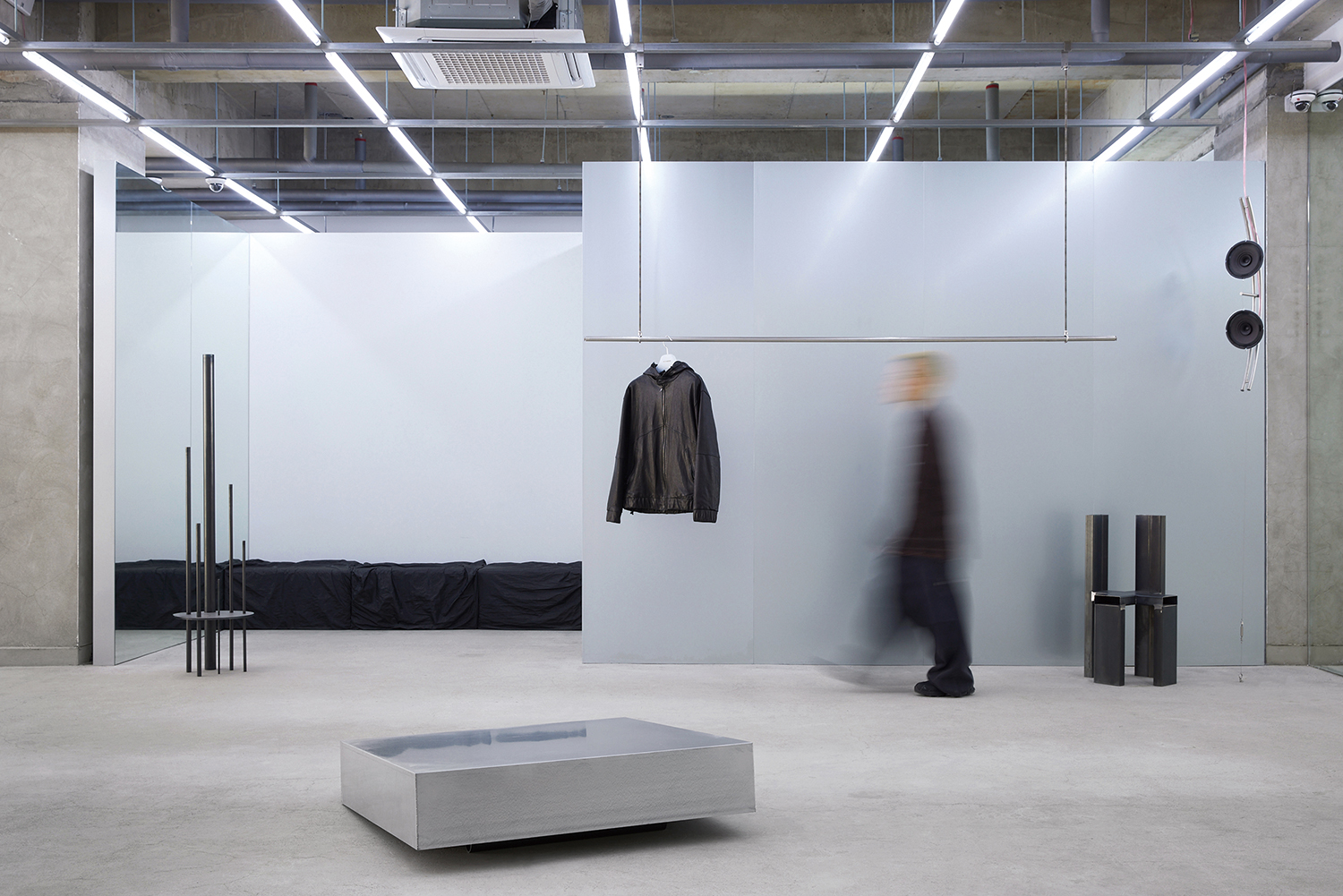
HATCHINGROOM Store in Seongsu (2024) ©STUDIO PRACTICE
Collective, PRACTICE
Kim: PRACTICE is known for its numerous collaborations.
Ahn: We collectively decide the direction of our studio—and nowadays, collaboration is one of our key values. Whenever we take on a project, the first thing we do is make a list of potential collaborators.
Lee: We keep track of a wide range of artists—not just in art furniture, but also crafts, graphic design, and more. From this mental stash of artists, we choose collaborators who fit the brand or space we’re working with. For example, we recently worked on a women’s fashion retail interior for DEWL in Jeonju (2025) and collaborated with artists Lee Yoonjeong and Ko Jaehyo. Since our own styles tend to be quite strong due to our focus on materiality, we needed to tone that down to reflect Duel’s brand identity. Lee Yoonjeong’s cast sculptural nail object in the form of nature – leaves and flowers – was a perfect way to visually express the brand’s identity. In addition, Ko Jaehyo’s existing work matched Duel’s aesthetic so well that we commissioned new wooden furniture pieces specifically for the project.
Ahn: We don’t always publicly announce these collaborations, but when projects require distinct wooden textures, we don’t outsource to factories—we ask the artists to create the work directly.
Kim: How do you usually find and contact collaborators?
Lee: Some are artists we met through Meeseek, and others we discover through Instagram or exhibitions. Since I’m an artist myself, I have artist friends who are always happy to collaborate. (laugh) But we’ve had the reverse situation too. For example, on our recent interior design project for UTMR Tokyo (2024), we collaborated with local designers and studios, such as the graphic designer Shuto Otsuki. We became friends during the process. Collaboration often brings people closer.
Kim: I am aware that you also participate in furniture art projects as artists. Does PRACTICE also produce furniture too?
Ahn, Lee: Not always, but sometimes we do. For one of our recent projects, the Artist Bottle Club (2025), we didn’t have a high enough budget to bring in outside artists, so we got hands-on—hammering nails, painting chairs, even burning finishes ourselves. However, it’s not always the budget that forces behind these decisions. Sometimes the finishes we want can’t be created in factories. When that happens, we do it ourselves on-site. That’s especially true for metal finishes. When brushing metal by hand, the direction of the strokes or the grit of the sandpaper can completely change the look. These kinds of subtleties can’t be fully conveyed through instructions, so we do it ourselves to get the right result.
Kim: Both of you seem to work across many different fields.
Lee: Actually, I take photos too. (laugh) I shoot most of portfolio images myself. Once you start doing one thing, it naturally leads you to expand into others.
Ahn: We’re both the type to try something at least once if we’re interested in it. This mindset has naturally expanded the boundaries of the work we do. We can’t really give up any of it, so we try to connect everything. Personally, I used to only curate exhibitions with furniture designers, but now I’m branching out and working with interior designers too.
Kim: What direction do you hope PRACTICE will take in the future?
Lee: I hope for us to grow into a more global studio, to move beyond a practice limited to Korea. Since I work with brands overseas, I want to collaborate more actively with international artists and studios.
Ahn: It’s been over five years since we started, so I’d love to publish a book summarising our studio’s philosophy. And, if possible, I really want to take on a full architectural project. We’ve done two so far, but only one reached the construction documentation phase. None have actually been built. I’m always waiting for that opportunity. There are still so many things we haven’t done yet as a studio.
Ahn Seohu and Lee Sisan, our interviewees, want to be shared some stories from Kim Dohyeong, Son Juhui (co-principals, SONKIM Architects) in July 2025 issue.
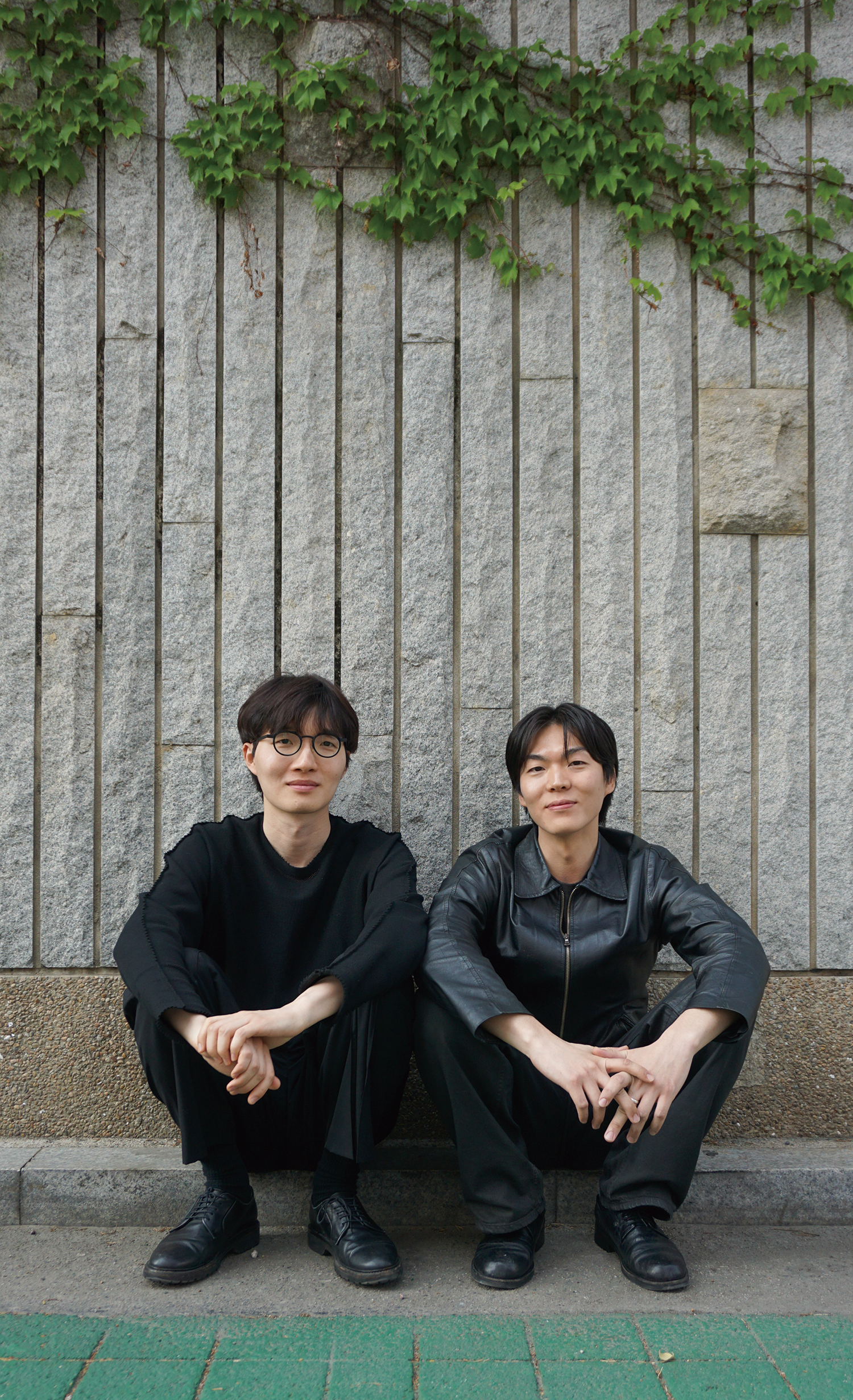
Ahn Seohu (left) and Lee Sisan (right)





